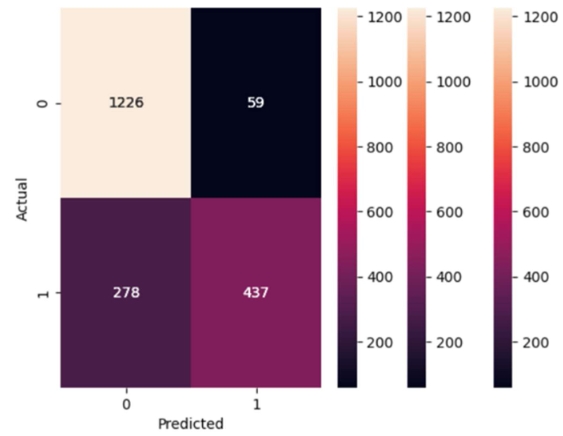The relationship between teachers’ self-efficacy and classroom management practices in secondary schools
Abstract
This study explores the intricate relationship between teacher self-efficacy and classroom management practices in secondary schools in the Mansehra district of Pakistan. Teacher self-efficacy, defined as the belief in one’s ability to manage and influence classroom environments effectively, has been identified as a critical factor influencing both teaching performance and student outcomes. The research employed a mixed-method approach, gathering data from 62 teachers and 310 students using both online surveys (via Google Forms) and physical questionnaires to ensure a diverse and inclusive participant pool. Data analysis was conducted using two complementary tools: SPSS and Smart PLS. SPSS was used for descriptive statistics and inferential analyses, such as t-tests, chi-square tests, and measures of central tendency, to offer an overview of group differences and relationships between variables. Meanwhile, Smart PLS was employed for Partial Least Squares Structural Equation Modeling (PLS-SEM), a technique suited for complex models and smaller sample sizes. This method allowed for the analysis of both direct and indirect relationships between the study variables—teacher self-efficacy, teaching practices, and classroom management. The findings reveal a significant positive correlation between teacher self-efficacy and classroom management practices. Additionally, teaching practices were found to mediate this relationship, indicating that higher levels of self-efficacy not only directly improve classroom management but also enhance teaching performance, which in turn contributes to better-managed classrooms. These results suggest that interventions aimed at enhancing teacher self-efficacy can have far-reaching effects on educational outcomes. The study highlights the need for focused teacher development programs that foster self-efficacy, thereby improving classroom management, student engagement, and overall academic success.
References
[1]Hussain MS, Khan SA, Bidar M. Self-efficacy of teachers: a review of the literature. Jamshedpur Research Review. 2022;1(50):110-6.
[2]Miloseva L, Miloseva D, Vukosavljevic-Gvozden T. Irrational and Rational Beliefs and Posttraumatic Stress Disorder: A Rational Emotive Behaviour Therapy Perspective. 2019.
[3]Kuehn KS, Dora J, Harned MS, Foster KT, Song F, Smith MR, et al. A meta-analysis on the affect regulation function of real-time self-injurious thoughts and behaviours. Nature Human Behaviour. 2022;6(7):964-74.
[4]Kullmann K, Heimann R. Development of Children and Adolescents: Possibilities of Influence. Violence Prevention in Education, School, and Club: Springer; 2022. p. 67-85.
[5]Hopkins B. The restorative classroom: Using restorative approaches to foster effective learning: Taylor & Francis; 2023.
[6]Al-Abyadh MHA, Abdel Azeem HAH. Academic achievement: influences of university students’ self-management and perceived self-efficacy. Journal of Intelligence. 2022;10(3):55.
[7]Liu TW, Ng SS. The elderly and fear of falling: Features and applications of cognitive-behavioral therapy. Handbook of Lifespan Cognitive Behavioral Therapy: Elsevier; 2023. p. 345-56.
[8]Marzano RJ. A handbook for classroom management that works: ASCD; 2005.
[9]Ahmed N. The Role of Classroom Management in Enhancing Learners’ Academic Performance: Teachers’ Experiences. Studies in Learning and Teaching. 2024;5(1):202-18.
[10]Landrum TJ, Kauffman JM. Behavioral approaches to classroom management. Handbook of classroom management: Routledge; 2013. p. 57-82.
[11]Barkley EF, Major CH. Student engagement techniques: A handbook for college faculty: John Wiley & Sons; 2020.
[12]Alwaely SA, Almousa NA, Helali MM, Alali RM, Rashed RM, Mashal AA, et al. Teacher-student rapport and gamified learning: Investigating the role of interpersonal variables in classroom integration. 2024.
[13]Caliba I. Self-efficacy, working conditions, school-based management practices and performance of teachers. Psychology and Education: A Multidisciplinary Journal. 2022;1(2):107-25.
[14]TURAN C, DEMİRTAŞ Z, FİDAN K. Investigating the Relationship between Self-efficacy and Job Satisfaction: A Research on High School Teachers. Eğitim Yansımaları. 2023;7(1):1-12.
[15]Gülsün I, Malinen O-P, Yada A, Savolainen H. Exploring the role of teachers’ attitudes towards inclusive education, their self-efficacy, and collective efficacy in behaviour management in teacher behaviour. Teaching and Teacher Education. 2023;132:104228.
[16]Gulistan M, Athar Hussain M, Mushtaq M. Relationship between Mathematics Teachers' Self Efficacy and Students' Academic Achievement at Secondary Level. Bulletin of education and research. 2017;39(3):171-82.
[17]Burden PR. Classroom management: Creating a successful K-12 learning community: John Wiley & Sons; 2020.
[18]Alasmari NJ, Althaqafi ASA. Teachers’ practices of proactive and reactive classroom management strategies and the relationship to their self-efficacy. Language Teaching Research. 2021:13621688211046351.
[19]Ban R. Teachers’ Efforts in Effective Classroom Management in English Language Teaching at Basic Level: Department of English Educaion; 2023.
[20]Adedigba O, Sulaiman FR. Influence of Teachers' Classroom Management Style on Pupils' Motivation for Learning and Academic Achievement in Kwara State. International Journal of Educational Methodology. 2020;6(2):471-80.
[21]Hằng NVT, Hằng NT, Liên NT. Classroom management competence of novice teachers in Vietnam. Cogent Education. 2022;9(1):2124042.
[22]Duffin LC, French BF, Patrick H. The Teachers' Sense of Efficacy Scale: Confirming the factor structure with beginning pre-service teachers. Teaching and teacher Education. 2012;28(6):827-34.
[23]Herron JP, Hennessey MN. Classroom Context Influence on Pre-Service Teacher Pupil Control Ideology. The Teacher Educator. 2022;57(2):198-214.
[24]Field A. Discovering Statistic Using IBM SPSS Statistic, 5th Edn. ed J. Seaman (Los Angeles, CA. 2018.
[25]Sarstedt M, Ringle CM, Hair JF. Partial least squares structural equation modeling. Handbook of market research: Springer; 2021. p. 587-632.
[26]Henseler J, Ringle CM, Sinkovics RR. The use of partial least squares path modeling in international marketing. New challenges to international marketing: Emerald Group Publishing Limited; 2009. p. 277-319.
[27]Cheung GW, Cooper-Thomas HD, Lau RS, Wang LC. Reporting reliability, convergent and discriminant validity with structural equation modeling: A review and best-practice recommendations. Asia Pacific Journal of Management. 2023:1-39.
[28]Burić I, Kim LE. Teacher self-efficacy, instructional quality, and student motivational beliefs: An analysis using multilevel structural equation modeling. Learning and Instruction. 2020;66:101302.
[29]Narayanan M, Ordynans JG, Wang A, McCluskey MS, Elivert N, Shields AL, et al. Putting the self in self-efficacy: Personal factors in the development of early teacher self-efficacy. Education and Urban Society. 2023;55(2):175-200.
[30]Gonzalez A, Peters ML, Orange A, Grigsby B. The influence of high-stakes testing on teacher self-efficacy and job-related stress. Cambridge Journal of Education. 2017;47(4):513-31.
[31]Lazarides R, Watt HM, Richardson PW. Teachers’ classroom management self-efficacy, perceived classroom management and teaching contexts from beginning until mid-career. Learning and Instruction. 2020;69:101346.
[32]Sahril S, Vega ND, Muhammad APA. Self-esteem and self-efficacy of students attending online courses through MBKM program. Journal of Educational Science and Technology. 2022;8(1):17-24.
[33]Arrington NM. Enhancing Preservice Teachers' Self-Efficacy for Teaching Diverse Learners: Capturing Young Students' Attention through a Read-a-loud and Music. Journal of the Scholarship of Teaching and Learning. 2023;23(2).
[34]Schwab JR, Griffin RA, Allen JK, Scullin BL, Ogletree TW. Components of Teacher Self-Efficacy for Literacy Instruction for In-Service Educators in Two Southeastern School Districts. Reading Psychology. 2023:1-21.
[35]El-Emadi AA, Said Z, Friesen HL. Teaching style differences between male and female science teachers in qatari schools: Possible impact on student achievement. 2019.
[36]Stough L. The place of classroom management and standards in teacher education. Handbook of classroom management: Routledge; 2013. p. 919-34.
[37]Rani S, Jain R. Understanding The Relationship Between Gender And Experience In The Self-Efficacy Of Indian Teacher Educators. Journal of Positive School Psychology. 2023:953-64.
Copyright (c) 2024 Irum Zeb, Yan Zhang, Aashiq Khan

This work is licensed under a Creative Commons Attribution 4.0 International License.









